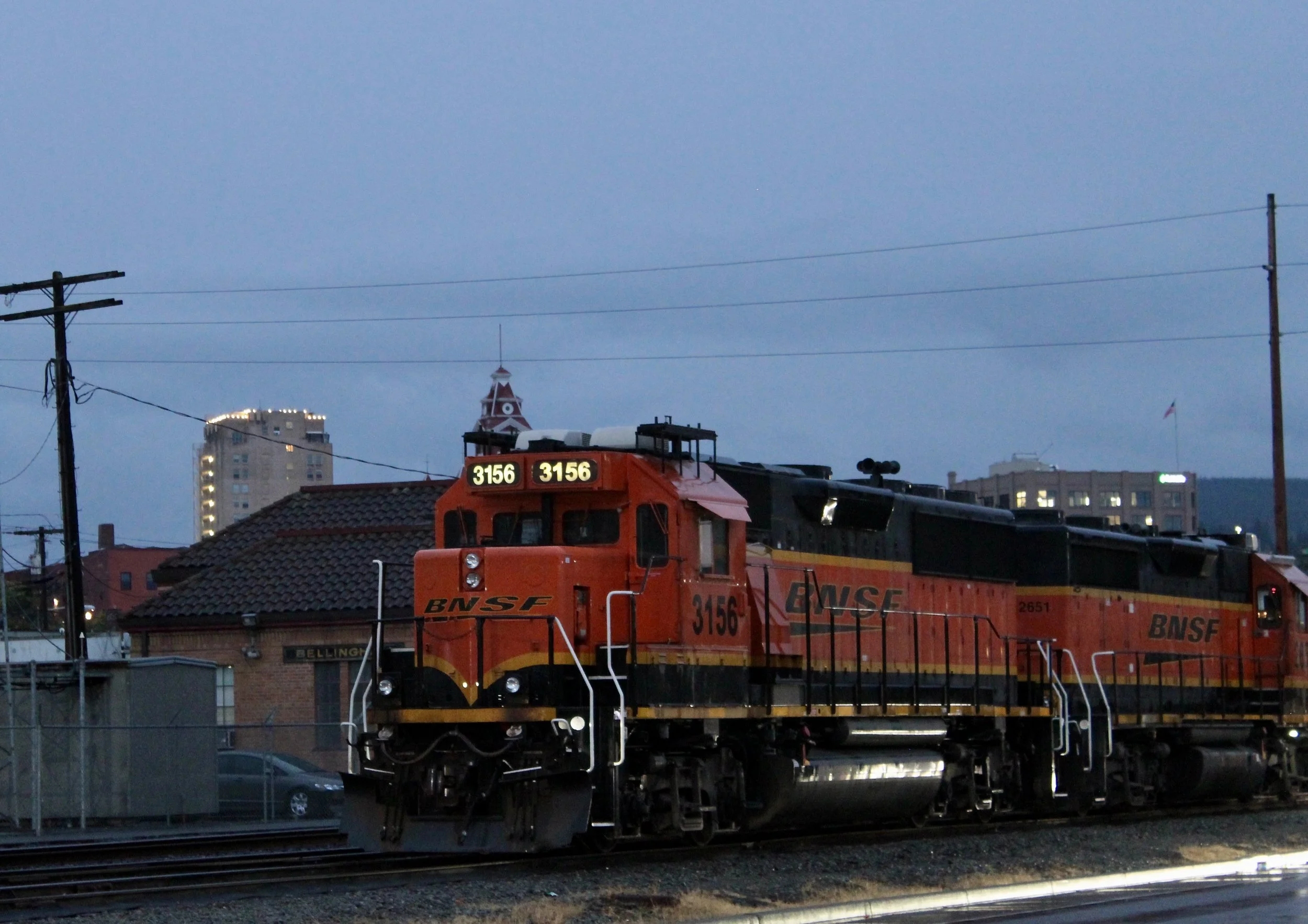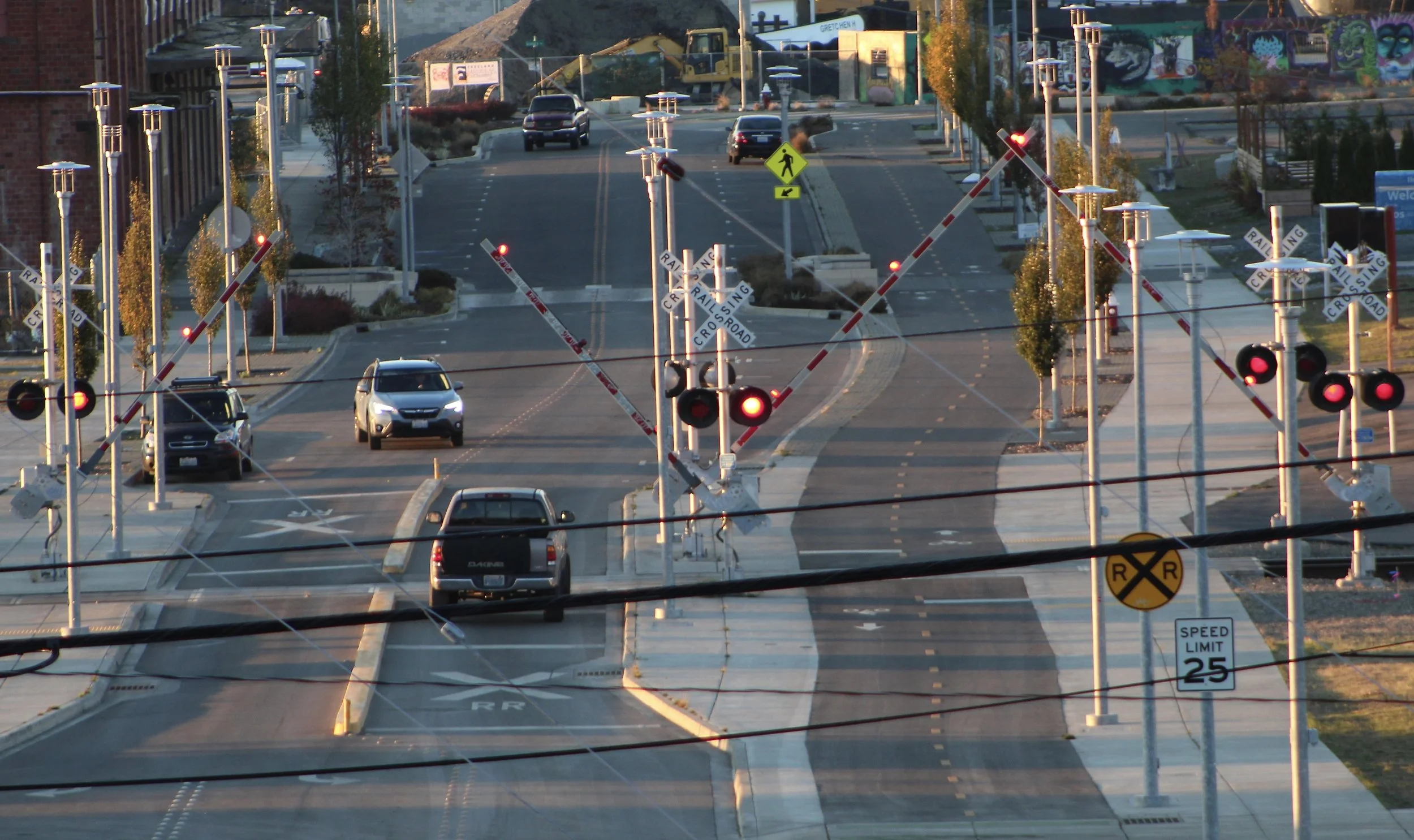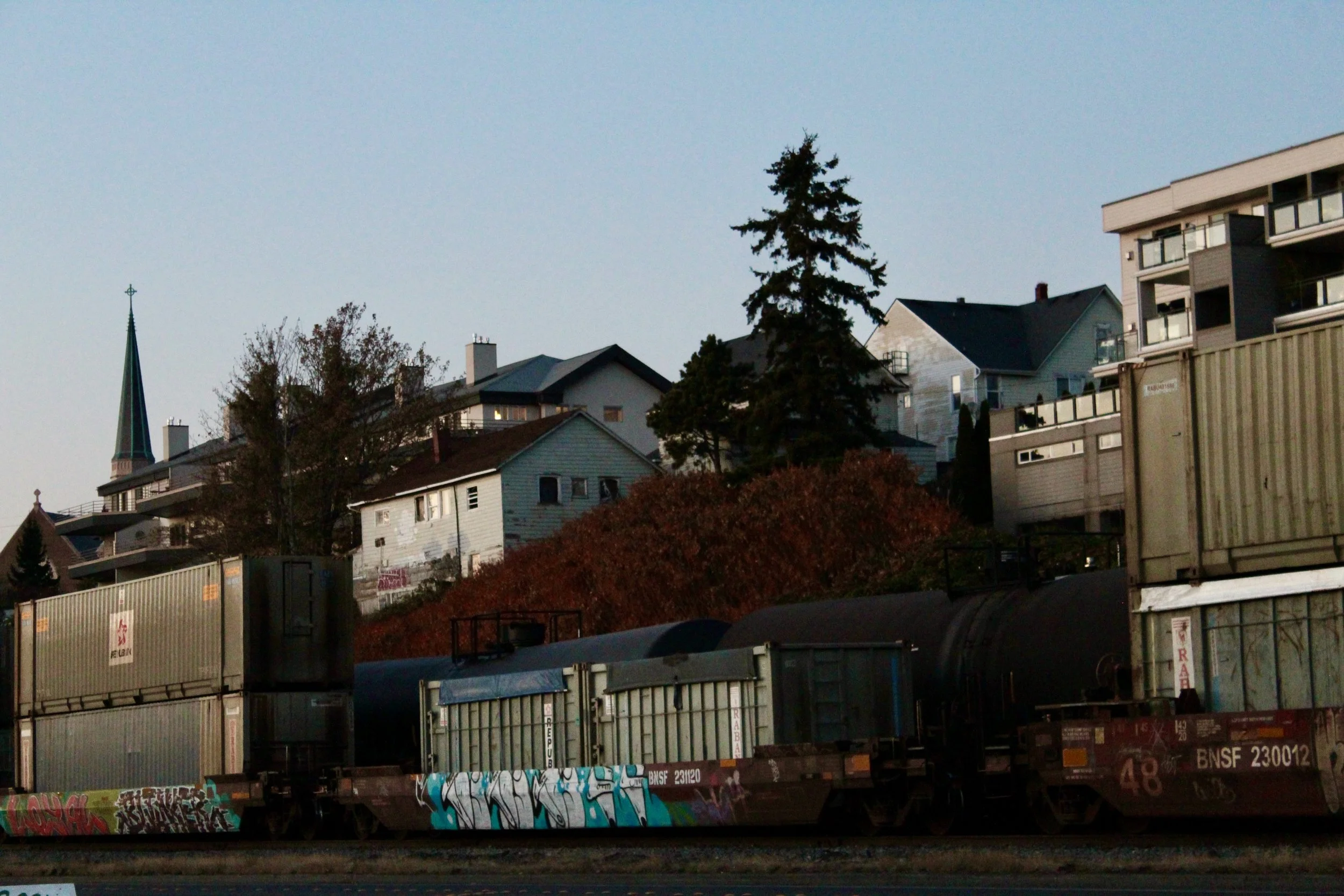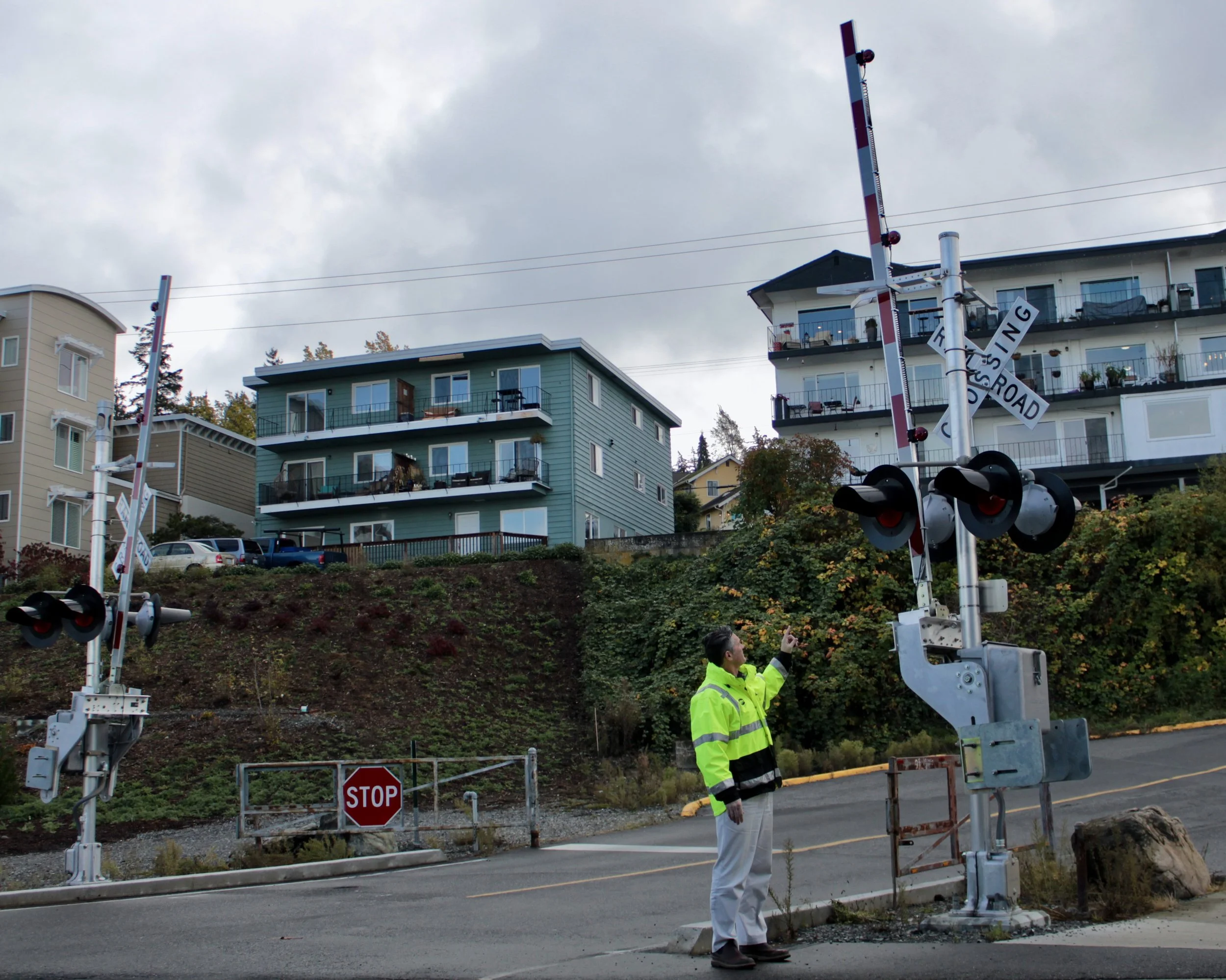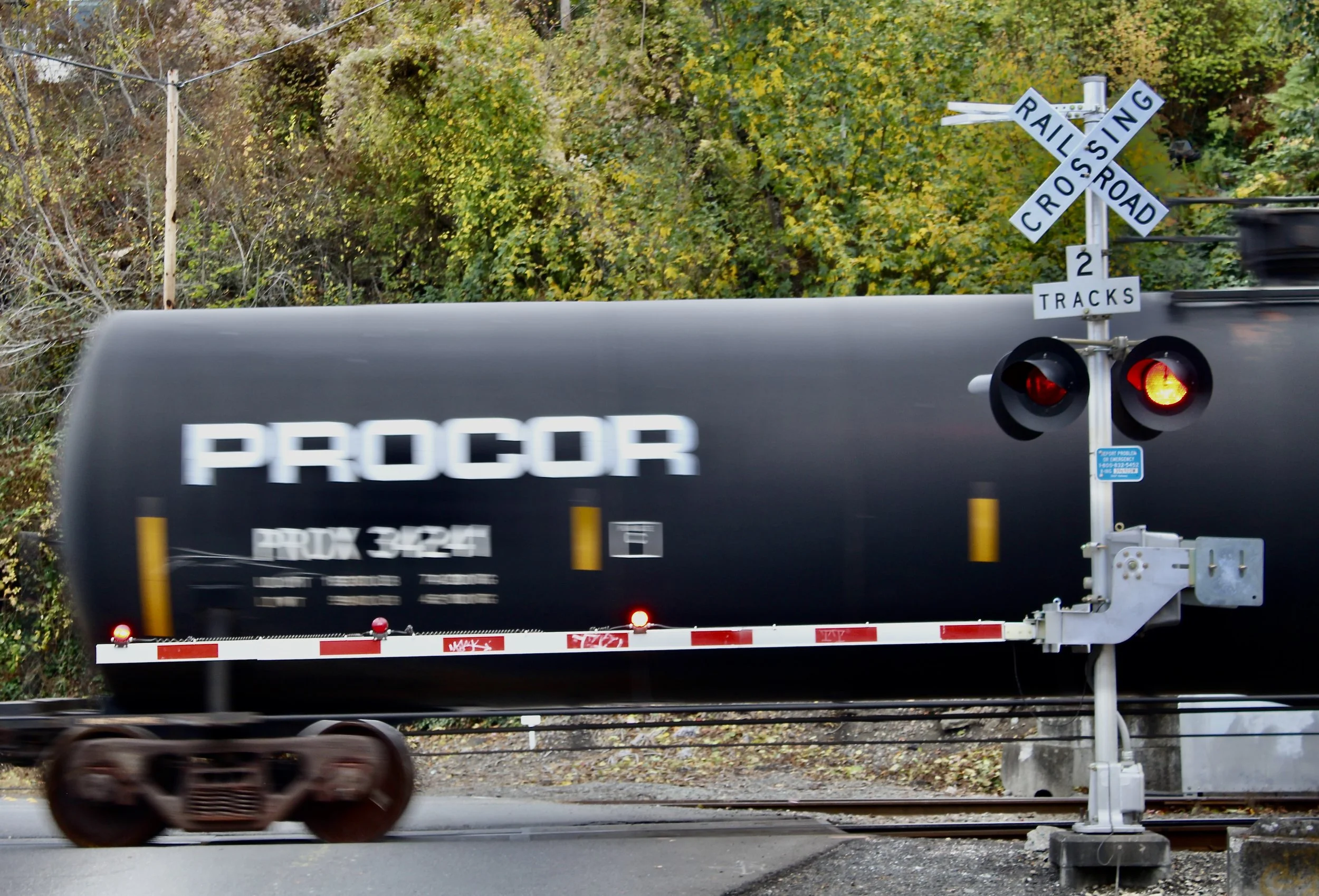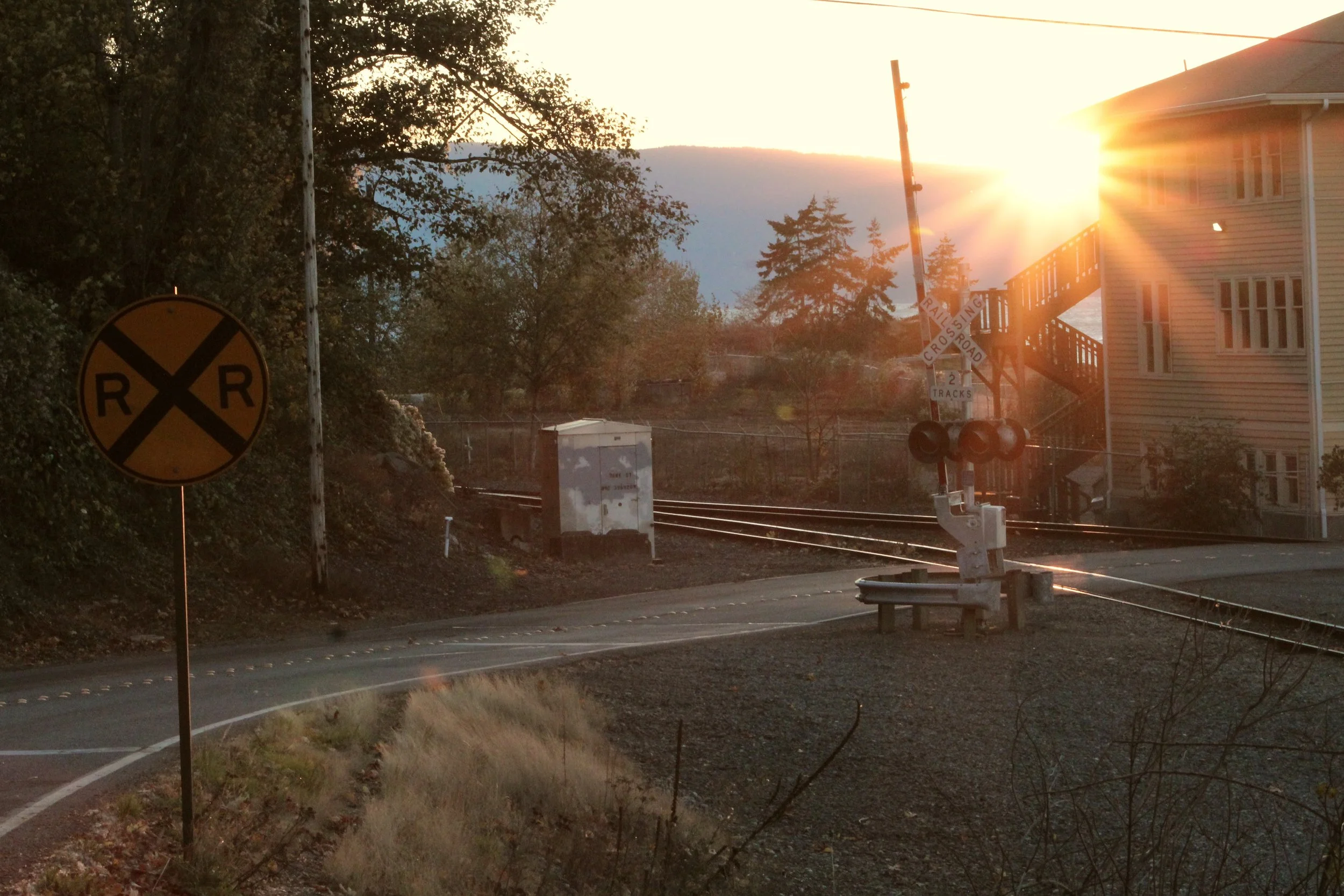City of Subdued Silence
Bellingham’s adoption of “Quiet Zones” and installation of safety equipment at railroad crossings to ensure safe horn volumes remains incomplete after more than a decade.
Story and photos by Seamus White
December 8, 2022
Along Bellingham Bay, trains can be heard chugging down the coast. Bellingham approved two “Quiet Zones” for trains passing through the city in 2007, but train horns continue to disrupt the lives of city residents.
A Burlington Northern Santa Fe Railway Company locomotive is parked in front of the BNSF Bellingham Yard Office at 1200 D St.
“We were waking up throughout the night – 4 a.m., 1 a.m. – as trains came through, blaring their horns. Both my wife and I sleep with earplugs now,” said Cameron Miller, a resident of Eldridge Avenue in the Columbia neighborhood.
In 2007, Bellingham’s coastline was divided into the northern Waterfront Quiet Zone and the southern Fairhaven Quiet Zone. There are 11 railroad crossings at equal elevation to the roadway, known as at-grade crossings, within the limits of the two quiet zones.
The Federal Rail Administration (FRA) set quiet zone standards in 2006 requiring all at-grade crossings to be equipped with specific safety systems or procedures, called Supplementary Safety Measures (SSM’s).
“Quad-gates" open at the completed Laurel Street crossing minutes after a freight train passed.
At least one SSM will be required at each of Bellingham’s 11 at-grade crossings before trains can stop sounding their horns. Currently, only five crossings are fully outfitted with SSM’s.
Without complete adoption of the SSM’s, the FRA requires that train horns be sounded between 96 and 110 decibels (dB) before each at-grade railroad crossing. The Centers for Disease Control and Prevention (CDC) says 95 dB can damage hearing after 50 minutes of exposure and 110 dB can cause hearing loss in less than two minutes.
The FRA requires locomotive engineers to begin sounding train horns at least 15 seconds, but no more than 20 seconds, before any public grade crossing, in the standard pattern of two long, one short and two long blasts.
Every train that passes through Bellingham is required by federal law to sound its horn at least four times at every at-grade crossing, for a minimum total of 44 horn blasts per train. This volume has been proven to cause hearing damage with extended exposure. Until the other six at-grade crossings are complete, the industrial symphony will continue for every passing train at all 11 crossings.
BNSF freight cars and oil tankers on BNSF sidings sit directly below the houses on Eldridge Avenue and W Holly Street.
“We have to get under agreement with [Burlington Northern Santa Fe Railway Company] (BNSF) because we’re working in a Burlington Northern Santa Fe right-of-way. They do all the work within their right-of-way, but we have to design it and pay for it. [That's] what takes the length of time, is coming under agreement with [BNSF],” said Chad Schulhauser, Bellingham’s assistant director of public works and a city engineer.
BNSF owns the railroad tracks, while the city owns the roads and the surrounding land.
The main safety measures the city chose to use at each crossing are called quadrant gates, or ‘quad-gates,’ “[which] means you’ve got four gates coming down so they block both lanes of traffic, so no cars can cut through and get across the tracks,” said Schulhauser.
Assistant Director of Public Works and City Engineer Chad Schulhauser demonstrates the function of inactive "Quad-Gates" at the completed Bayview Drive railroad crossing next to Boulevard Park.
A freight train rushes past one of two active gates at the incomplete Pine and Wharf Street crossing. A completed crossing has four gates, or "quad-gates".
Two crossings owned by the Port of Bellingham in the Fairhaven Quiet Zone, as well as one on F Street, are scheduled for completion by the end of 2023. The crossing on Cornwall Avenue will not be complete until 2025 at the earliest and the crossings on Pine and Wharf Streets will take until at least 2028. The Central Avenue crossing has no date set for completion and will be the last crossing brought to quiet zone standards in Bellingham. Schulhauser’s personal guess is that the full Quiet Zone will become operational in ten years.
Miller voiced his frustration at the city’s lack of communication with affected residents.
“It’s part of the privilege of living with a view and where we do, but the horns are something that feels like it affects the community as a whole in a way that I think the city has a responsibility to take action,” said Miller. “I’m disappointed that they haven’t [taken action], nor have they provided any information to us as residents, and my experience of public works is that they’re not very good at that.”
Bellingham residents will continue to experience periodically interrupted sleep and daily activities until the Quiet Zone is complete, 15 years after the city’s initial approval.
Residents experience a moment of silence as the sun sets on the Pine and Wharf Street crossing.
Seamus White is a second-year student at Western’s College of the Environment, an avid skier and an amateur filmmaker.

